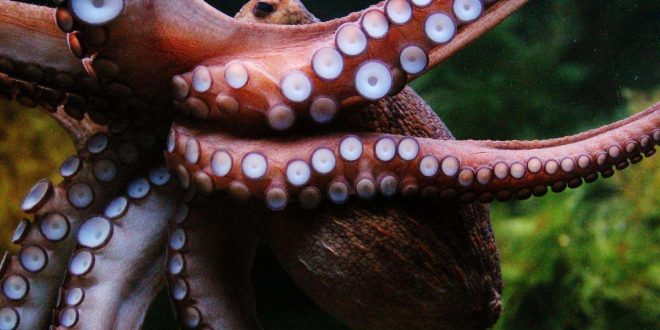Physicists and engineers from Cornell University have taken inspiration from octopus skin to design a new stretchy camouflage material.
Those animals can change their skin into a textured 3D surface to mimic the ragged outline of seaweed and coral on the ocean floor.
The team’s pneumatically-activated material is inspired by the 3D bumps – called papillae – on octopus skin, which can be triggered by the creatures in a fifth of a second. “Lots of animals have papillae, but they can’t extend and retract them instantaneously as octopus and cuttlefish do,” said Roger Hanlon of the Marine Biological Laboratory at Woods Hole, Massachusetts. “These are soft-bodied molluscs without a shell; their primary defence is their morphing skin.”
These structures have no skeletal support, and engineers were able to develop synthetic tissue groupings that allowed them to mimic them. “Engineers have developed a lot of sophisticated ways to control the shape of soft, stretchable materials, but we wanted to do it in a simple way that was fast, strong and easy to control,” said lead author James Pikul, an assistant professor of mechanical engineering at the University of Pennsylvania.
“We were drawn by how successful cephalopods are at changing their skin texture, so we studied and drew inspiration from the muscles that allow cephalopods to control their texture, and implemented these ideas into a method for controlling the shape of soft, stretchable materials.”
The materials could be used to create camouflaging materials that can be controlled to reflect or absorb light as required. “It’s an interesting work,” Ravinder Dahiya, a professor of electronic and nanoscale engineering at the University of Glasgow, told Professional Engineering. He said that adding sensors to such a device in future could make it even better.
“The main thing is being able to control the 3D structures,” he said. “If they can also embed some proximity sensors in such a structure inside a stretchable skin it would be a great advantage.”
Agencies/Canadajournal
 Canada Journal – News of the World Articles and videos to bring you the biggest Canadian news stories from across the country every day
Canada Journal – News of the World Articles and videos to bring you the biggest Canadian news stories from across the country every day



